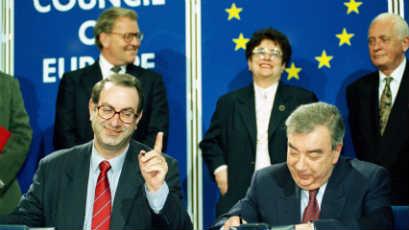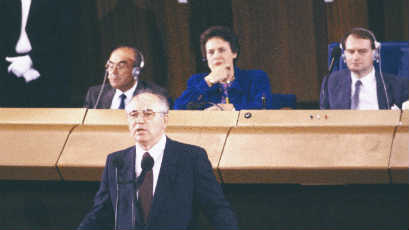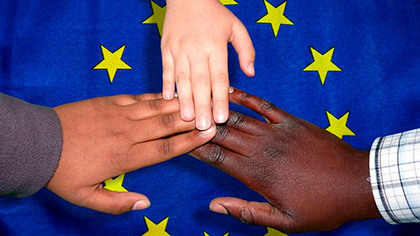Asset Publisher

Europe, our common home
1989-2006
Alexander ORLOV

In 2017 we celebrated the 100th anniversary of the October Revolution, which radically changed – for better or for worse, depending on your point of view – my country and the world. This anniversary overshadowed another: the 150th of the 1867 Exposition Universelle (World’s Fair) in Paris, whose splendour marked the high point of the “concert of nations” resulting from the Congress of Vienna in 1815, the guarantee of a fragile but durable peace for our continent. On that occasion in 1867 – in this magnificent building in the heart of Paris, the Hôtel d’Estrées, which had been purchased four years earlier by Russia and has since been used as the residence of its ambassadors – Tsar Alexander II gave a ball in honour of Emperor Napoleon III and Empress Eugénie: the father of liberal reforms in Russia (including the abolition of serfdom) and the architect of my country’s territorial expansion in central Asia had come to celebrate Franco-Russian friendship and, beyond that, the establishment of Russia among the great powers of Europe.
In spring 1987, 120 years after this doubly imperial ball, I left Paris in the back of a limousine to travel to Strasbourg for the first time. As political adviser at the Embassy of the USSR in Paris, I was accompanying the Ambassador, Yakov Ryabov, who had been invited to visit the headquarters of Adidas France in Landersheim near Saverne, and I had suggested that we take advantage of the trip to establish what was de facto the first official contact between the USSR and the Council of Europe. I remember an excellent lunch at the Auberge du Kochersberg, followed by a beautiful drive along a country road flanked by rapeseed fields on our way to the Palais de l’Europe. There we were received, very courteously, by Louis Jung, a French (and Alsatian) senator, who was at that time President of the Parliamentary Assembly of the Council of Europe. I had already had occasion to meet him several times in Paris, since he was also a member of the French delegation to the Parliamentary Assembly of the Western European Union (WEA), in whose work we took a close interest. Our meeting was therefore very cordial: contact was established, holding out hope of future exchanges in an atmosphere of trust, even if no clear political prospects were outlined.
In my telegram report I highlighted the efforts that the Council of Europe was then making, at the instigation of Louis Jung himself and the Secretary General Marcelino Oreja, to promote a rapprochement between East and West. This policy of openness was underpinned by the European Cultural Convention, to which all European states could accede whether or not they were members of the Council of Europe: it was thought that bringing together all the countries of Europe through cultural co-operation covering such broad areas as culture, cultural heritage, education, higher education and research, as well as youth and sport, could be an effective means of overcoming the then still sizable political obstacles. Above all, I emphasised that this somewhat undervalued Organisation carried within it the ideals of democracy, human rights and the rule of law, which were the new direction in which the General Secretary of the Communist Party of the Soviet Union (CPSU), who had come to power two years earlier, wanted to take the USSR, thereby putting an end to the Cold War and the separation of Europe into two rival blocs. A number of years later I learnt that this telegram had met a rather extraordinary fate, since it had got as far as Mikhail Gorbachev’s office and had come back, annotated in his own hand, with the instruction, “We must develop contacts with this organisation”!
Gorbachev’s historic visit to the Council of Europe
Two years later, on 6 July 1989, I was again on my way to Strasbourg. This time I was part of an imposing motorcade taking the same Gorbachev to give a historic address to the Parliamentary Assembly of the Council of Europe during a state visit to France. This address remains a key historical statement and a model of its kind to this day.
If you wish to continue your reading, you may buy the book "Europe: a human enterprise".
Alexander ORLOV
Born in 1948 and educated at the Moscow State Institute of International Relations, Alexander Orlov has had a long career, first in Soviet diplomacy and then, after the break-up of the USSR, in Russian diplomacy. As Permanent Representative of Russia to the Council of Europe from May 2001 to January 2007, he presided over the Ministers’ Deputies during Russia’s chairmanship of the Committee of Ministers of the Council of Europe, between May and November 2006. The high point of his career was the 9 years that he spent in Paris as the Russian Federation’s Ambassador to France, from October 2008 to October 2017.




